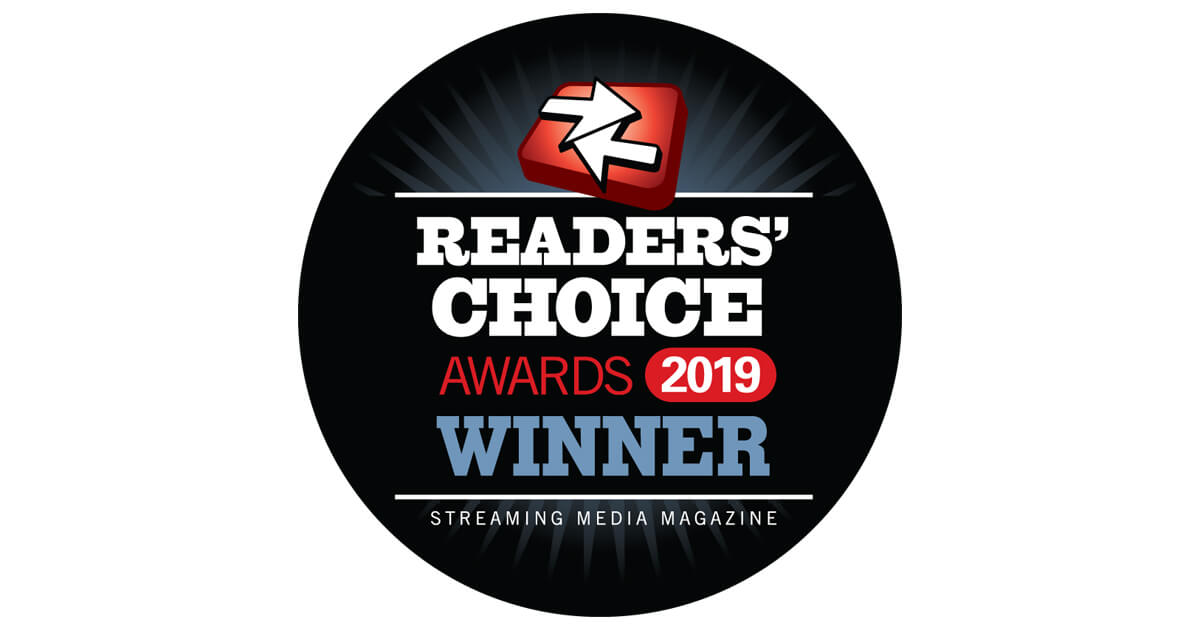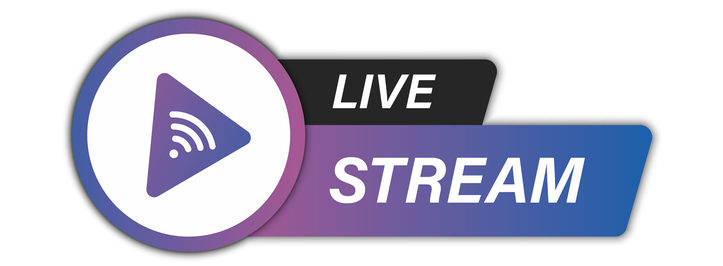Video Live Streaming: History, Present, and Future
As industry magazine Streaming Media puts it, “we’ve seen the meteoric rise of streaming video across every aspect of modern work and entertainment.” It’s only by looking backward that we can truly appreciate how rapid this rise in video streaming has been. In fact, 15 to 20 years ago, the online video didn’t really exist. Today, billions of people watch video live streaming via a device that fits in their pocket.
In this article, we’ll take a detailed look at the history of video live streaming—and the road we took to get here. Plus, we’ll provide an overview of live video streaming today. Finally, we’ll finish the article by looking at the future of video live streaming. What’s next for this explosively growing industry?
Let’s get started!
The History of Video Live Streaming
Many technical advances in the 1990s and 2000s improved the bandwidth of computer networks. This was the birth of the internet as we know it today.
This allowed the first true streaming media to be born. Early efforts in the history of live streaming mostly constituted single-event broadcasts, rather than continuous 24/7 live streaming. Many of the first streaming efforts concentrated on audio content. This is because the audio doesn’t require as much data capacity as video.
1993: First Live Streaming Concert

In 1993, the garage band Severe Tire Damage became the first band to broadcast live over the Internet. For its live broadcast debut, the band live-streamed a Xerox PARC concert to audiences around the world.
Needless to say, the quality was of this debut broadcast was poor. The video resolution was about 100 lines, and the framerate was around 4 frames per second. Even more striking, according to Dacast partner Switchboard Live, that broadcast required around half the bandwidth of the entire internet!
1996: First Large-Scale Live Video Broadcast
The first large-scale on-line video broadcast occurred in 1996 when Marc Scarpa produced the Tibetan Freedom Concert. The show was headlined by the Beastie Boys, Rage Against the Machine, Björk, and The Smashing Pumpkins. Very 90’s.
1999: First Online Presidential Address
In November 1999, the first live stream of a political event took place: an online town hall meeting with President Bill Clinton.
2002: Macromedia Flash Launches v6, Support for RTMP
Online video used to be synonymous with Flash Player. The creation of software tools such as Flash Player was a major factor that facilitated the streaming of video content. Flash Player was originally launched in 1996 as a browser plugin to play streaming audio and video formats. In August 2002, Version 6 was the first release to include RTMP. RTMP, or Real-Time Media Protocol, is still used for some live streaming use cases!
2005: YouTube and Google Video Launch
By 2005, the online video industry was poised to take off. Broadband internet was becoming widespread, and computers were much more powerful. This was the year that two pioneers of video hosting launched: YouTube and Google Video (which have since merged).
2010: Dacast Officially Launched

By 2010, live streaming was feasible for businesses.
That’s when Stephane Roulland and Aldric Feuillebois made the public launch of Dacast, a company they had been working on for two years. Dacast continues to offer video hosting and streaming solutions. And we’re still expanding today!
Most recently, we’ve acquired the vzaar online video platform and added it’s powerful functionality to Dacast. And we’ve won the Streaming Media Readers’ Choice Awards for Best SMB Platform–for two years running!
2012: Olympics Are Live Streamed for the First Time
By 2012, live streaming was ready for the big leagues. This was the year that NBC streamed the Olympic Games for the first time. It wasn’t until the 2016 Olympics that every event streamed live.
These examples represent just a small sample of the history of video live streaming. Next, let’s transition into the playing field of live streaming solutions today.
Video Live Streaming Today
Today, video live streaming is common and fully developed. It’s also accessible. The largest companies in the world use live streaming. Likewise, universities, governments, and individuals all use live streaming technology. Today, it’s possible to live stream from a smartphone or to conduct professional multi-camera broadcasts. And you can do all this much more affordably than broadcast TV.

Live streaming to a massive audience is now possible using global content delivery networks. For example, Super Bowl LII reached an audience of more than 3 million concurrent live streamers in 2018.
Technology for live streaming is well-established and standards are mature. This maturity has made it easier for companies to invest in video infrastructure. Here are the current standards for live streaming:
That maturity is allowing online video to scale rapidly, which current statistics likewise convey. The video streaming market is predicted to be worth $30.6 billion by 2022. Live streaming is making up the majority of that growth. At this point, more than 63% of people ages 18-34 are watching live-streaming content regularly.
The Future of Video Live Streaming
So what does the future hold?
It’s always hard to predict, but a few broad trends can bee observed. Overall, we can expect continued rapid growth. Optimizing for mobile devices is also ongoing. Here are three more significant trends we see in the video live streaming market.
1. The Rise of 5G Wireless Networks
 Internet speeds are also essential for live streaming. And even though speeds have been increasing, the changes have been slow. However, that may be changing. The coming 5G cell networks will provide speeds roughly 100 times faster than the best available 4G LTE networks. Bottom line? The internet is about to get much, much faster.
Internet speeds are also essential for live streaming. And even though speeds have been increasing, the changes have been slow. However, that may be changing. The coming 5G cell networks will provide speeds roughly 100 times faster than the best available 4G LTE networks. Bottom line? The internet is about to get much, much faster.
That will impact video more than anything else. AS IHS Markit put it, “video streaming will be 5G’s killer app.” Expect 4K and VR (Virtual Reality) streaming to be defining features of the next three or four years. The streaming experience will be getting much more immersive, very soon.
2. New Protocols
We mentioned earlier that RTMP is still in use today. However, there are some competitors on the rise. “HLS Direct” live streaming is increasingly popular due to decreased latency it can deliver. RTMP is reaching the point where it will be phased out soon.
Here at Dacast, we still support RTMP streaming as well as an HLS ingest option. We will always ensure smooth streaming and maximum reliability as protocols change into the future.
3. Next Generation Codecs and Formats
The dominant codec for video live streaming today is H.264. That’s been the standard for well over a decade. But it’s plain old. Next-generation video codecs deliver higher quality video with lower file sizes.
But next-generation video codecs like H.265 haven’t been able to dethrone H.264, largely for legal reasons. Thus far, HEVC “has been hampered by commercial terms that are widely perceived as unreasonable.”
However, there are other alternative codecs in development now. One is AV1, a free codec that resolves the licensing issues of HEVC. AV1 is progressing towards being production-ready. And it’s already supported on all Chrome and Firefox browsers. This will provide the best alternative to H.264 and HEVC in the near future.
Next-generation video codecs are nearly ready for the big leagues. These codecs will be part of the large trend we’re highlighting here: more and more technological maturity. More and more speed. More and more quality. And more and more growth of the video streaming industry.
Conclusion
One thing is certain: video live streaming is not going anywhere. It has already transformed the way we think of television and video. TV isn’t dying. It’s already died, and online video has since replaced it. Hopefully, this article has provided an interesting overview of the history of live streaming.
If you want to learn more about video live streaming today, feel free to dive into our blogs and white papers. We’re here to answer your questions 24/7, and our LinkedIn group is getting very popular.
Want to jump right in and start live streaming? Click the button below to sign up for a 14-day free trial (no credit card required) with the Dacast online video platform. We’ll have you set up and streaming in a matter of minutes!
We also offer a range of professional services for businesses that need more assistance in getting started. Thanks for reading and, as always, best of luck with your video broadcasts!
 Stream
Stream Connect
Connect Manage
Manage Measure
Measure Events
Events Business
Business Organizations
Organizations Entertainment and Media
Entertainment and Media API
API Tools
Tools Learning Center
Learning Center Support
Support Support Articles
Support Articles